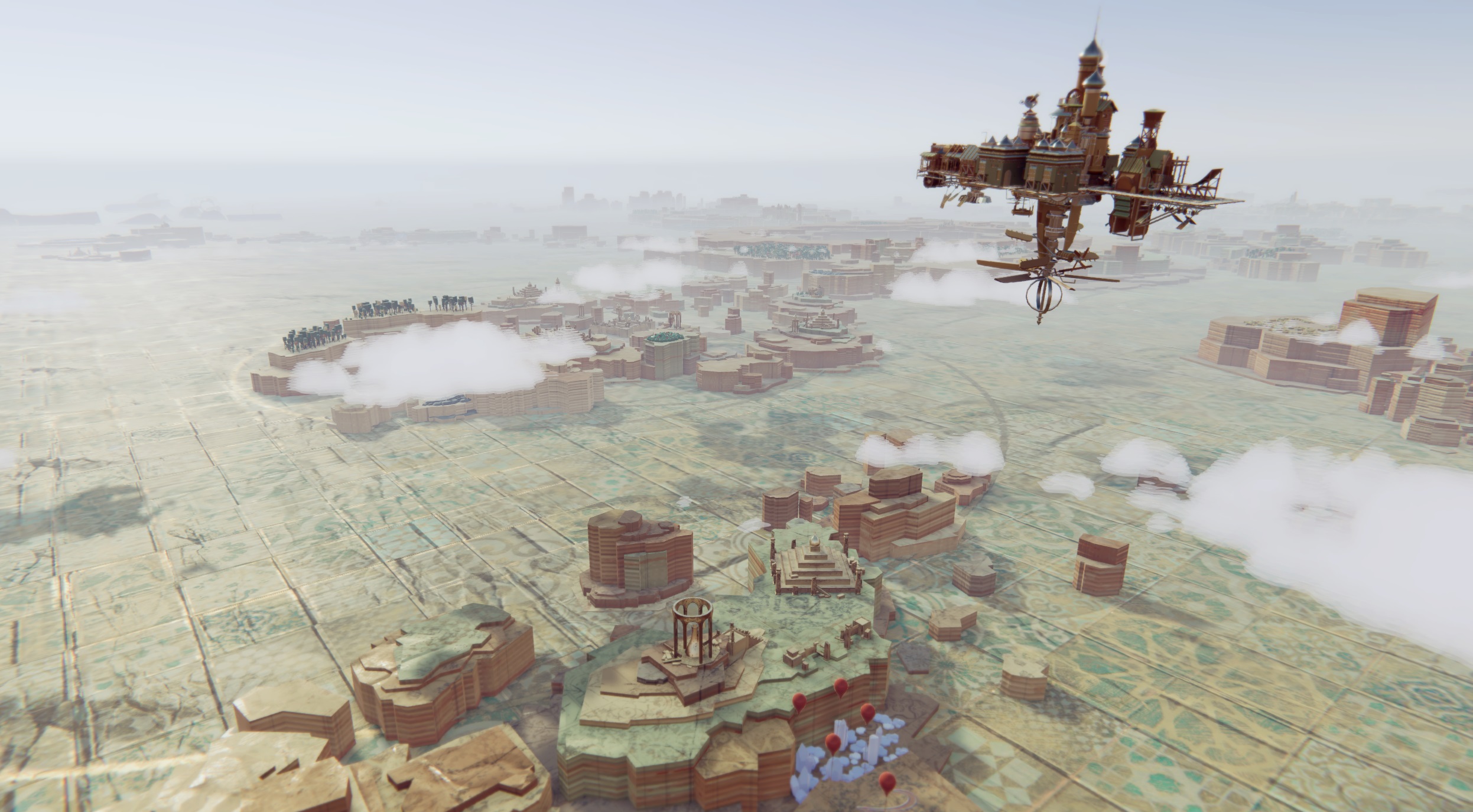

And the larger the city became, the more force it needed to move, adding another element of infrastructure, Propulsion, for players to stay on top of. If players wanted to find new technologies to construct, they’d have to search for interest points on the ground - an in-world research tree. With resource collection, instead of sending workers further and further away, the city itself moved closer to them. This mechanic integrated elegantly with the rest of our game. With no anchoring to the ground, a player could simply click on a spot in the world, and their entire city would fly above that location. We tried a number of mechanics to find our own slant, but it wasn’t until we added right-click-to-move (first described by our programmer Fred Gareau as “movement like an RPG”) that we could fully see the potential of what we’d created. Yet our first prototype of this concept felt underwhelming - a village suspended above a ground plane had little to set it apart from genre staples.

The systemic nature of the genre was intriguing, and the creative potential of a kingdom-among-clouds was equally tantalizing. We had all worked on hit franchises ( Dragon Age, Star Wars, Battlefield, etc) and had almost half a century of combined industry experience - but our debut game, Airborne Kingdom, would be the first time any of us felt complete creative control over something big, with enough skill and resources to pull it off.įrom the beginning, we loved the idea of creating a city-builder in the sky. Then in 2017, Visceral closed - so a few old colleagues and I founded the studio The Wandering Band. We believe that your voice matters.Īlso.After years at various AAA houses, I left Visceral Games in 2015 to “go indie” (solo-developing a narrative adventure, A Case of Distrust). We aren't just a news and reviews site, we are a community. Your source for everything Nintendo Switch.

Keeping your town balanced is a factor in your citizens’ happiness who wants to live on a floating city that slopes too far to one side? Adding too much weight to one side of the city also causes it to tilt to the front or back or left or right. You have to build wings and engines to generate more lift to make room for more buildings.
#AIRBORNE KINGDOM. FULL#
Moving your town into a position where you can gather multiple resources is key to keeping your warehouses full – and building more warehouses is vital for building more advanced structures.Īdditionally, structures have weight, and your basic city center only has so much lift. The big catch with that is that the planes have a limited range if you move too far away from a resource your workers can’t gather any more. Resources are gathered by sending workers out in airplanes. Everything about the game revolves around moving your city to the proper position. The airborne element of Airborne Kingdom is the game’s most unique and interesting element. The Thing About an Airborne Kingdom Is You Have to Keep It in The Air Certainly, I’m more a fan of deep narratives with relatable characters and grand, engrossing plots, but the writing and story in Airborne Kingdom are well more than satisfactory. The story advances through small but engaging bits of narration whenever players encounter a new kingdom and complete quests to bring said kingdom into the fold. So, while the story isn’t super deep, it’s certainly got a compelling backstory. Its purpose is to reconnect the nations of the world and found a new age of prosperity. After years of research, a new flying city has been built. Then the floating city disappeared mysteriously, and the kingdoms lost touch with one another and the world fell into decay. Airborne Kingdom takes place in a world where a flying city had united all the kingdoms of the world in an age of learning and enlightenment. I said earlier that Airborne Kingdom has a deeper story than Islanders, but that’s a little misleading as the latter had no story of which to speak.


 0 kommentar(er)
0 kommentar(er)
